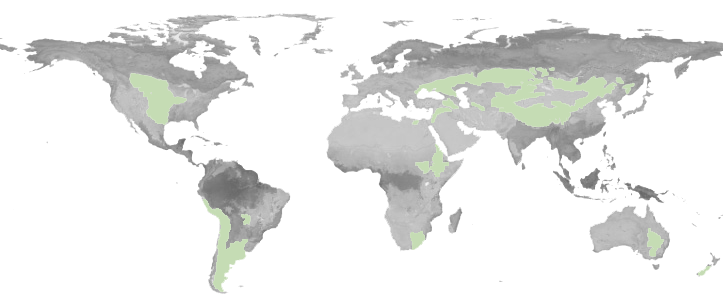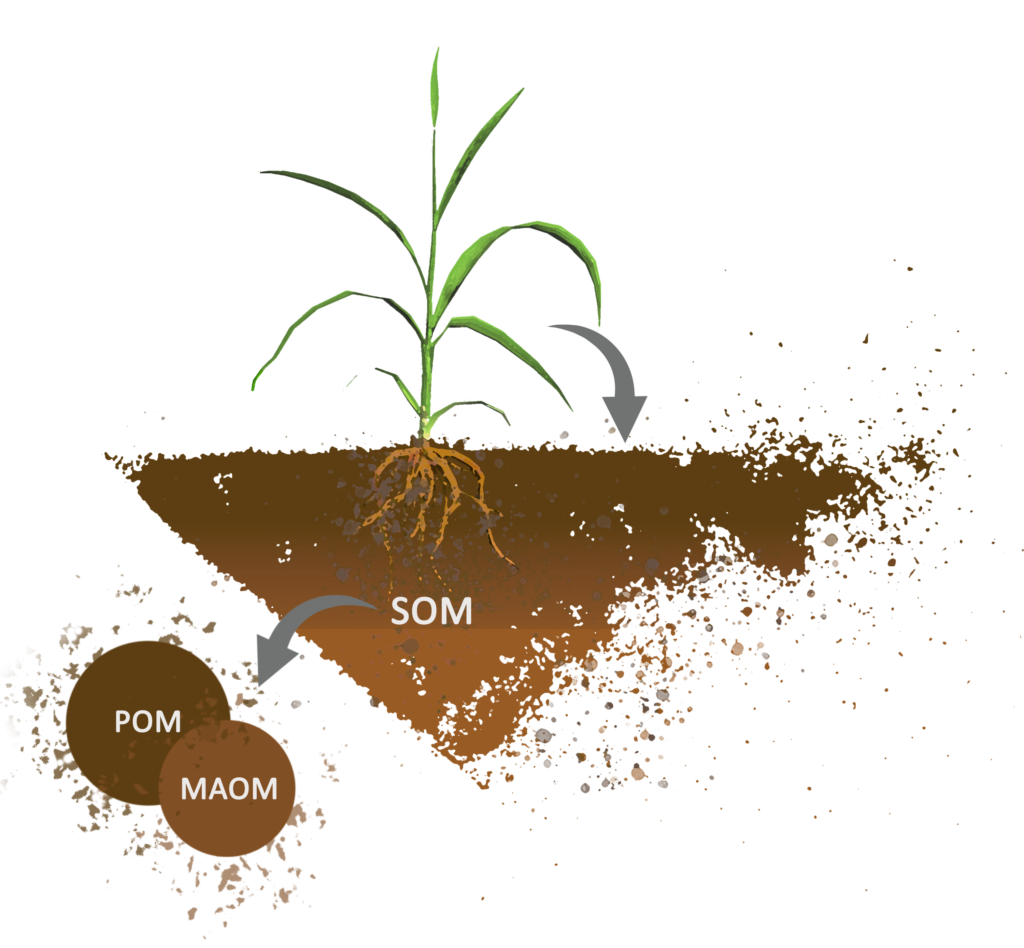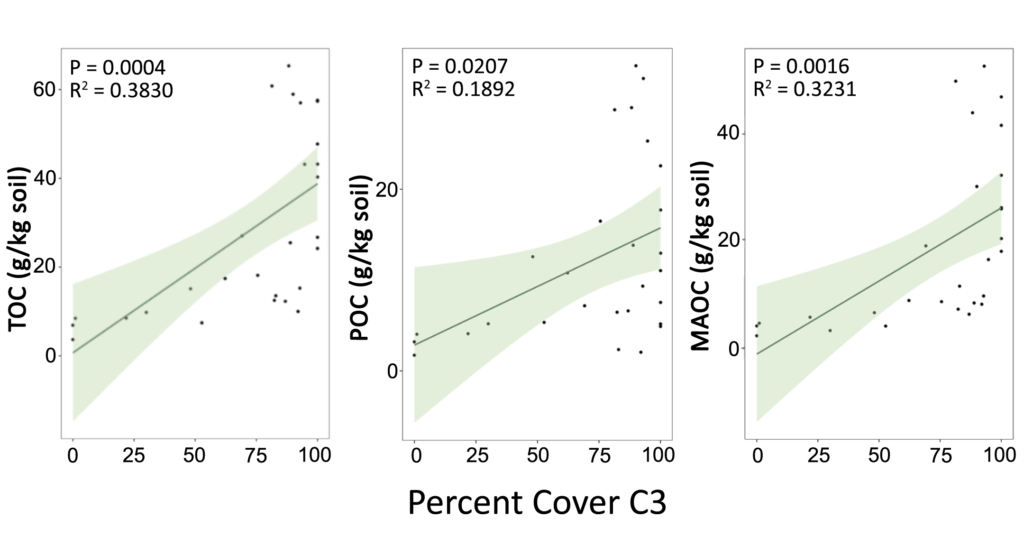Planting an Idea
Soil organic matter (SOM) is a valuable resource that stores and cycles carbon (C). Particulate organic matter (POM) and mineral-associated organic matter (MAOM) fractions, discussed a bit further here, provide a useful working hypothesis for understanding mechanisms of SOM stabilization.
Plants are major contributors to SOM. Litter, which in this context is dead plant material that gets decomposed in soil, plays a critical role in SOM stabilization through interactions with microbes and soil characteristics (Castellano et al. 2015). Litter quality is generally simplified to a C to nitrogen (N) ratio, but the contributions of litter to soil may be mediated by other plant characteristics.
Grassland Focus
A focus on grassland plants offers a unique opportunity for broadening our understanding of plant contributions while simultaneously “zooming in” to see if broad models can explain variation within a single ecosystem type.
Grasslands make up between 20 and 26% of the world’s land cover, including agricultural fields (NASA, FAO). They are easily manipulated by human actions, for better or worse. They are therefore the focus of initiatives such as the International Geosphere-Biosphere Programme (IGBP).

Investigation
During my 2020 summer USDA NIFA REEU fellowship, in collaboration with Katherine Rocci, NutNet Scientists, and Dr. M. Francesca Cotrufo, I explored the relationship between grassland plant characteristics and C concentrations in POM and MAOM across grassland sites. Plant characteristics I assessed included specific leaf area (SLA), root to shoot ratio, specific root length (SRL), root diameter, the presence of a mycorrhizal symbiont, plant functional type, and photosynthetic pathway.

Starting with soil samples and plant cover data from ten NutNet sites distributed across Europe, Australia, and North America, I built a database with photosynthetic pathway (determined through literature review) and averages of plant traits downloaded from the TRY Plant Trait Database. Soil samples were separated into POM and MAOM and analyzed for C and N concentrations. I used multiple and mixed linear regression models and one-way ANOVA in R to determine correlations.
There were weak associations for SLA, SRL, and plant functional types. The strongest result of our study, however, was the correlation between photosynthetic pathway and C concentrations (figure below). Photosynthetic pathway predicted C concentrations even when considering climate variables and soil texture.

We are now conducting additional research to confirm and further investigate this exciting result, so stay tuned for our future results!
